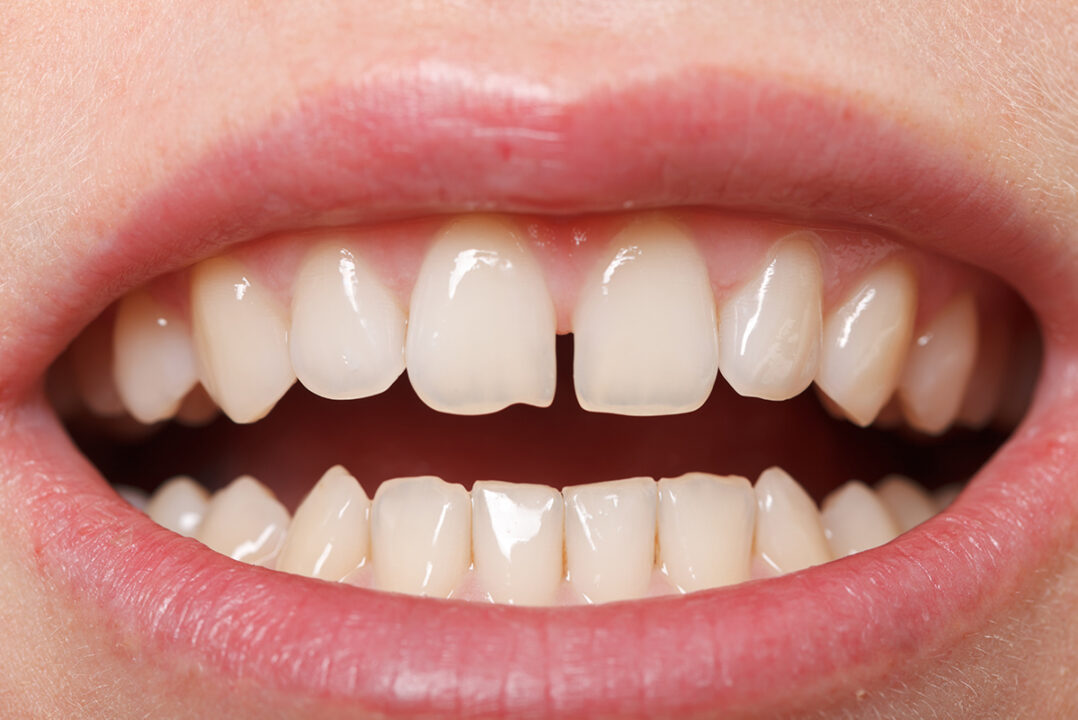Welcome to our discussion on how to fix gap teeth. One aspect of your smile bothers you – the noticeable gap between your front teeth. Even though the spacing may be small, it can still impact your self-confidence. Various factors can contribute to this issue, such as missing teeth, teeth shifting, thumb-sucking during childhood, gum disease, or an overgrown frenulum (the tissue above the two front teeth).
The good news is that several treatments are available to address teeth spacing. But here’s the catch: the treatment options differ in cost and effectiveness, making it challenging to determine the best procedure for your situation.
Why it is Needed to Fix Gap Teeth
Are you wondering how to fix gap teeth? Apart from impacting your self-esteem, having widely spaced teeth can also affect your dental health. Gaps between teeth tend to trap food particles, leading to the growth of bacteria and plaque in your mouth. If left unaddressed, this can lead to complications such as weakened gums, tooth decay, and gum disease.
Moreover, having gaps between your teeth can result in an improper bite. This can make chewing challenging and uncomfortable, and it may also cause jaw and ear pain. Also, difficulty chewing may lead to swallowing large pieces of food, resulting in digestive issues.
How to Fix Gap Teeth?
If you’re looking for an answer to the query on fixing gap teeth, read this section carefully. There are several treatments available depending on the complexity of your situation. Let’s explore some of the primary options:
- Dental Bonding: This is a quick, easy, and affordable way to fix spacing issues in your teeth. Your dentist in Chicago will apply a tooth-colored resin material to the affected area. They will shape it and use a special light to harden it. Dental bonding is completed in a single visit and does not require enamel removal, making it reversible. However, keep in mind that the composite material used may stain over time and is not as durable as other restorations
- Veneers: If you have gaps with discolored or chipped teeth, veneers may be a suitable option. These are thin ceramic or porcelain shells that your dentist will bond to your teeth, covering the gaps and other imperfections. Veneers are a great choice because they don’t stain and provide a more permanent solution than bonding. They can also be customized to match the natural color and shape of your teeth
- Braces and Invisalign: In more severe cases of teeth spacing, you may need braces or Invisalign. Braces use metal brackets to move your teeth into their proper positions gradually. Conversely, Invisalign involves using a series of clear plastic trays to achieve the desired alignment. Both options can improve your smile and promote proper dental function
Different Causes of Gap in Teeth
Having a gap between your teeth is more widespread than you might think. There are various reasons it can occur; fortunately, there are ways to address this issue. Let’s explore the primary causes and potential solutions for fixing gap teeth.
- Gum Disease: Poor gum health can result in receding gums, gum infections, and loose teeth. Left as it is, it can cause your teeth to shift, resulting in gaps. Maintaining good oral hygiene and seeking treatment for gum disease can help prevent or minimize the formation of gaps
- Oversized Labial Frenum: Although it may not be commonly known, an oversized labial frenum is a frequent cause of gaps between the front teeth. The labial frenum is a thin tissue connecting your upper lip and gums.
Sometimes, it grows abnormally, causing a separation between the front teeth and creating a gap. In such cases, a dentist can perform a frenectomy, a simple surgical procedure to remove or adjust the excessive tissue, thus closing the gap
- Genetics: Your genetic makeup plays a significant role in various aspects of your oral health, including the spacing of your teeth. Jaw size and tooth size, which are determined by genetics, can influence the presence of gaps. For instance, individuals with larger or wider jaws may have more room for their teeth to move, potentially leading to gaps. Additionally, gaps can develop later in life if a tooth is extracted, creating space for the surrounding teeth to shift.
Consulting with an orthodontist or dentist can help determine the best course of action to address genetic-related gap teeth, such as orthodontic treatments or dental implants
- External Physical Force: External forces can also contribute to developing gaps between teeth. Childhood habits like thumb sucking and dental trauma from accidents or injuries can affect tooth alignment. Additionally, certain behaviors, like thrusting the tongue against the teeth while eating, can create gaps over time. Identifying and addressing these habits, along with seeking professional dental care, can help prevent or correct the formation of gaps caused by external physical force



